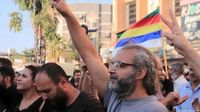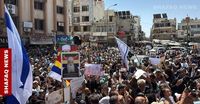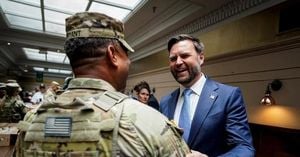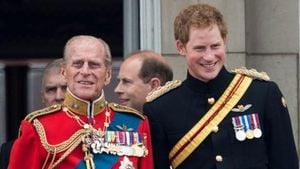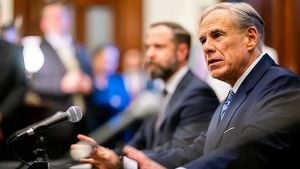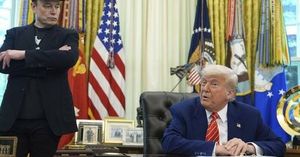On August 16, 2025, the streets of Suwayda in southern Syria pulsed with the energy of a community demanding its voice be heard. In the largest demonstration since last month’s deadly clashes, hundreds—by some estimates, thousands—of Druze protesters gathered in the city’s central squares, waving their distinct flags and, notably, Israeli flags as well. Their rallying cry: the right to self-determination and a decentralized system of governance for their minority community, which has long felt caught in the crossfire of Syria’s shifting political landscape.
According to Shafaq News, demonstrators filled Suwayda’s main square under banners proclaiming “the right to self-determination.” Portraits of Sheikh Hikmat al-Hijri, a revered Druze religious leader, were hoisted high, while chants and placards demanded greater political inclusion and a new national dialogue that would guarantee representation for all of Syria’s communities. “The right to self-determination is a sacred right for Sweida,” read one sign, capturing the sentiment that has taken hold in the region.
This protest, as reported by The Associated Press and The Times of Israel, was the first in Syrian Druze history to explicitly brandish the slogan of self-determination. Rayyan Maarouf, head of the activist media collective Suwayda 24, told the Associated Press, “This is an unprecedented change for the Druze in Syria.” Maarouf described the demonstration as the largest since last month’s violence, with similar gatherings erupting in the nearby towns of Shahba and Salkhad. The movement, he said, signals a dramatic shift in the community’s approach to its place in Syria’s future.
The roots of this latest unrest trace back to July 13, when deadly clashes erupted between Druze militias and armed Bedouin Sunni tribes in Suwayda. The violence quickly escalated, drawing in Syrian government forces and volunteers from across the country. According to the UK-based Syrian Observatory for Human Rights, approximately 1,600 people were killed in the fighting, many of them Druze civilians. The Observatory, along with local Druze factions, accused government forces of siding with the Bedouin and committing abuses, including summary executions—a claim that has fueled the community’s outrage and calls for justice.
Damascus, for its part, has insisted that its forces intervened to restore order in the region. Yet, as AP and The Times of Israel note, many Druze see the government’s actions as deeply compromised. The interim central government, established after the collapse of the Assad family’s rule in December 2024, has struggled to assert its legitimacy amid persistent ethnic and sectarian strife. Protesters in Suwayda and beyond have openly rejected the authority of the interim leadership, demanding accountability for atrocities committed against their community during the July clashes.
“Today Sweida has taken a stand… under the slogan of the right to self-determination,” resident Munif Rashid, 51, told AFP. “This is Sweida’s position today, and no one can blame it because the assault it faced was not normal.” Another protester, identified as Mustafa Sehnawi—a US-Syrian dual national—voiced the community’s sense of siege: “We’ve been under siege for more than one month. We call on the international community… to open (humanitarian) corridors.”
One of the most striking images from the August 16 demonstration was the presence of Israeli flags, waved as a gesture of thanks for Israel’s intervention during the July violence. As reported by The Times of Israel and AP, Israel bombed Syrian government forces in southern Syria last month, stating that it aimed to demilitarize the region and protect the Druze minority. Israel’s actions were not without controversy, but for many Druze, they represented a rare instance of outside support in a conflict that has often left their community isolated.
“Some of the protesters called on Israel to intervene to support their demand of self-determination,” the Syrian Observatory for Human Rights reported. The symbolism of the Israeli flag is complex; while the Druze have sizable communities in Israel and the Israeli-occupied Golan Heights, the act of publicly thanking Israel is a bold move in a country where relations have been historically hostile.
The July clashes themselves marked a grim chapter in Syria’s ongoing turmoil. As AP details, the fighting began when Druze militias and local Bedouin tribes clashed, with government forces soon intervening. However, instead of calming the situation, the government’s involvement was widely perceived as partisan, with accusations that it sided with the Bedouins. Israel, in turn, launched dozens of airstrikes on government convoys and even struck the Syrian Defense Ministry headquarters in Damascus—an extraordinary escalation that underscored the volatility of the region.
In the aftermath, the Syrian military declared a ceasefire on July 19, but the peace has been tenuous at best. Residents of Suwayda accuse the government of imposing a blockade on the province, severely restricting the flow of goods and humanitarian aid. State media, however, claim that aid convoys have entered the province, including one on August 16. The main Damascus-Suwayda highway remains blocked, according to the Syrian Observatory, with armed groups linked to the government accused of preventing the resumption of normal trade.
In response to the outcry over the violence, Syria’s interim government under President Ahmed al-Sharaa (also known as Abu Mohammed al-Julani) announced the formation of a committee to investigate the events in Suwayda. The committee is expected to deliver its findings within three months. Whether this inquiry will satisfy the demands for justice remains to be seen, as skepticism abounds among the Druze and other minority groups.
The Druze themselves are a unique community, tracing their origins to a 10th-century offshoot of Ismailism, a branch of Shiite Islam. Today, over half of the world’s roughly 1 million Druze live in Syria, with significant populations in Lebanon and Israel, including the Golan Heights—territory Israel captured from Syria in the 1967 Mideast War and later annexed. The Druze do not identify as Muslim, and their distinct religious and cultural traditions have often set them apart in the region’s complex sectarian mosaic.
Syria’s broader crisis, meanwhile, continues to deepen. The collapse of the Assad regime in late 2024 left a power vacuum that has yet to be filled, with ethnic and religious divisions threatening to tear the country apart. The renewed violence in Suwayda and along the coast earlier this year is a stark reminder that peace remains elusive, and the grievances of minority communities like the Druze are far from resolved.
As the dust settles from the latest round of protests, the path forward for the Druze—and for Syria as a whole—remains uncertain. But one thing is clear: the voices raised in Suwayda on August 16 have set a new precedent for a community long accustomed to silence, signaling that the demand for self-determination is now at the heart of Syria’s ongoing struggle for identity and justice.
